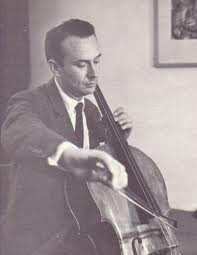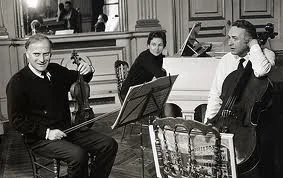Maurice Gendron (1920-1990)
/Maurice Gendron was born near Nice at Grez-sur-Loing, France.
His musical studies began with the violin at the age of four but at the age of five he decided to change to the cello. He played a quarter-size cello and was in lovewith the instrument. The first time that he heard Fueremann concertise, he was ten years old. His cello teacher, Stepane Odero, took him and Gendron was so incredibly moved by the experience that he wept.
He went to the Nice Conservatory and graduated when he was fourteen years old with first prize. A few years later he went to Paris to study with Gerard Hekking but had very little money and consequently his health suffered. On the outbreak of WWII he was classified exempt from military service due to ill health and aided the war movement by joining the Resistance. While WWII raged around him, he continued performing but refused to perform in Germany.
On December 2nd, 1945, shortly after the end of the war, he made his solo debut in Wigmore Hall, London. He performed sonatas by Faure and Debussy with Benjamin Britten on piano.
Gendron made many recordings during his career, one of the most famous and celebrated being the unaccompanied Bach cello suites. He also recorded various concert repertoire with conductors such as Bernard Haitink and even Pablo Casals. He was also one of the first to play Boccherini’s Concerto in B flat in its original form.
In his later years he taught at the Paris Conservatoire where among his students were Colin Carr and Jacqueline du Pre. He was also in the celebrated trio with Yehudi and Hephzibah Menuhin and they played together for 25 years.
Gendron’s Cello
His cello has become known as the “Ex-Gendron” cello and is an 18th Century Stradivarius. It is currently on loan to German cellist Maria Kliegel.











